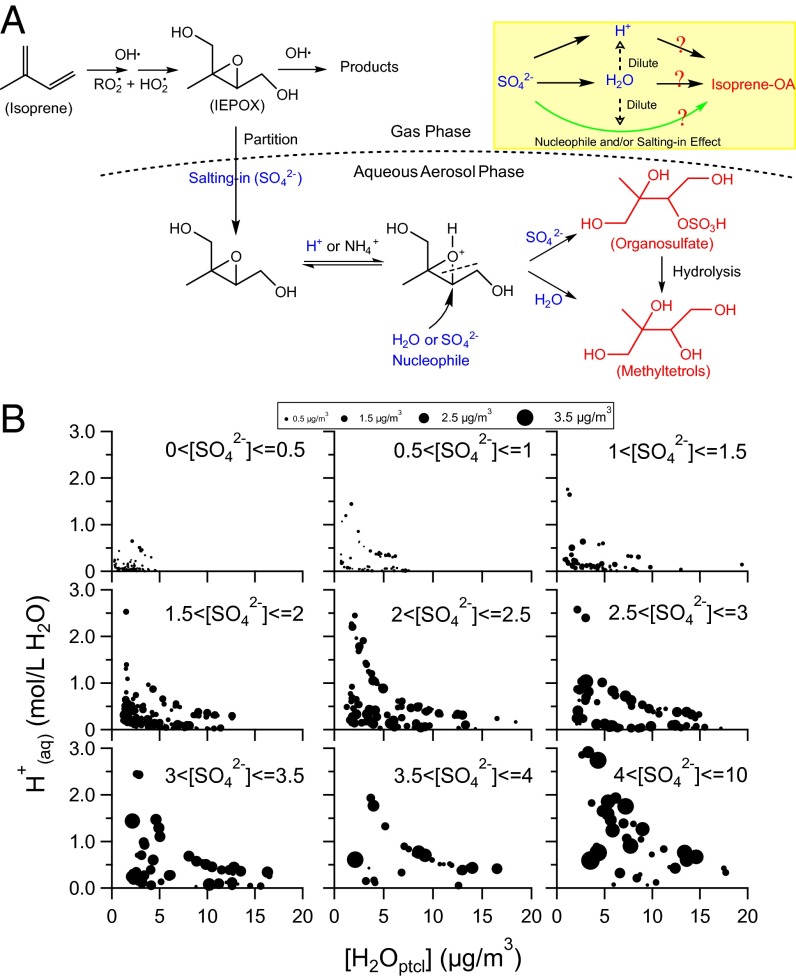Fig. 3.
(A) A simplified mechanism of isoprene SOA formation via reactive uptake of IEPOX based on refs. 8 and 26. Only one IEPOX isomer is shown. Compounds colored blue are the parameters we investigate in this study. Compounds colored red are two representative species for isoprene SOA. Inset shows a schematic explaining the relationship between particle water (H2Optcl), particle acidity (H+), sulfate (SO42−), and Isoprene-OA. The direct role of SO42− on isoprene OA formation is colored green. The indirect role of SO42− through H2Optcl and/or H+ is colored black. (B) H+(aq) (moles per liter H2O) as a function of [H2Optcl] (micrograms per cubic meter of air). All data points are grouped into nine subplots based on a 0.5 μg⋅m−3 increment in [SO42−], and the size of data points represents [Isoprene-OA]. In some cases, a range of H+(aq) is observed for the same [H2Optcl], which is likely due to difference in gas-phase [NH3] (SI Appendix, Fig. S6).

